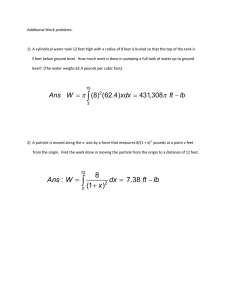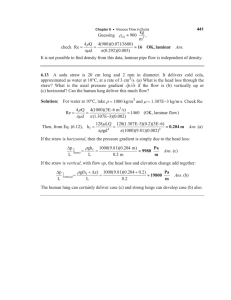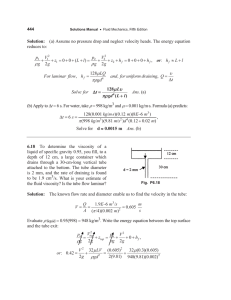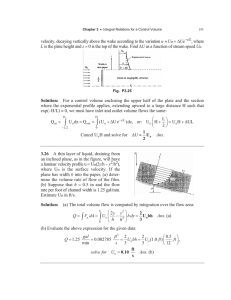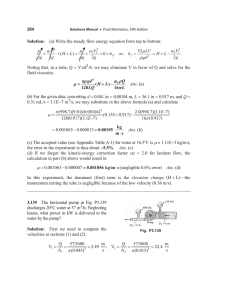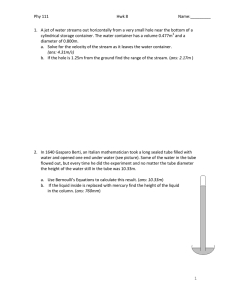! Thus h z
advertisement
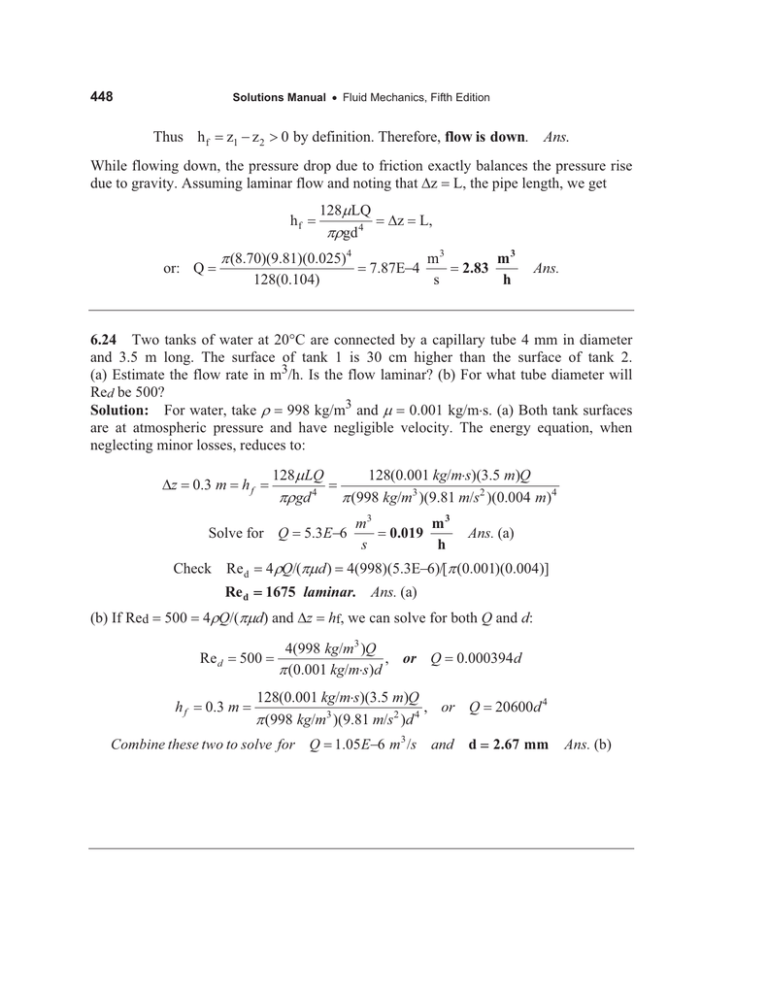
448 Solutions Manual x Fluid Mechanics, Fifth Edition z1 z2 ! 0 by definition. Therefore, flow is down. Ans. Thus h f While flowing down, the pressure drop due to friction exactly balances the pressure rise due to gravity. Assuming laminar flow and noting that 'z L, the pipe length, we get 128P LQ SUgd 4 hf or: Q S (8.70)(9.81)(0.025)4 128(0.104) 'z L, 7.87E4 m3 s 2.83 m3 h Ans. 6.24 Two tanks of water at 20qC are connected by a capillary tube 4 mm in diameter and 3.5 m long. The surface of tank 1 is 30 cm higher than the surface of tank 2. (a) Estimate the flow rate in m3/h. Is the flow laminar? (b) For what tube diameter will Red be 500? Solution: For water, take U 998 kg/m3 and P 0.001 kg/ms. (a) Both tank surfaces are at atmospheric pressure and have negligible velocity. The energy equation, when neglecting minor losses, reduces to: 'z 0.3 m 128P LQ SUgd 4 hf Solve for Q 4UQ/(SPd) and 'z Re d hf 0.3 m m3 0.019 h Ans. (a) 4(998)(5.3E6)/[S (0.001)(0.004)] 1675 laminar. Ans. (a) Re d 500 m3 5.3E6 s 4 UQ/(SP d ) Check Re d (b) If Red 128(0.001 kg/ms)(3.5 m)Q S (998 kg/m3 )(9.81 m/s2 )(0.004 m)4 500 hf, we can solve for both Q and d: 4(998 kg/m3 )Q , or Q S (0.001 kg/ms)d 0.000394d 128(0.001 kg/ms)(3.5 m)Q , or Q S (998 kg/m3 )(9.81 m/s2 )d 4 Combine these two to solve for Q 1.05E6 m 3 /s and d 20600d 4 2.67 mm Ans. (b)
